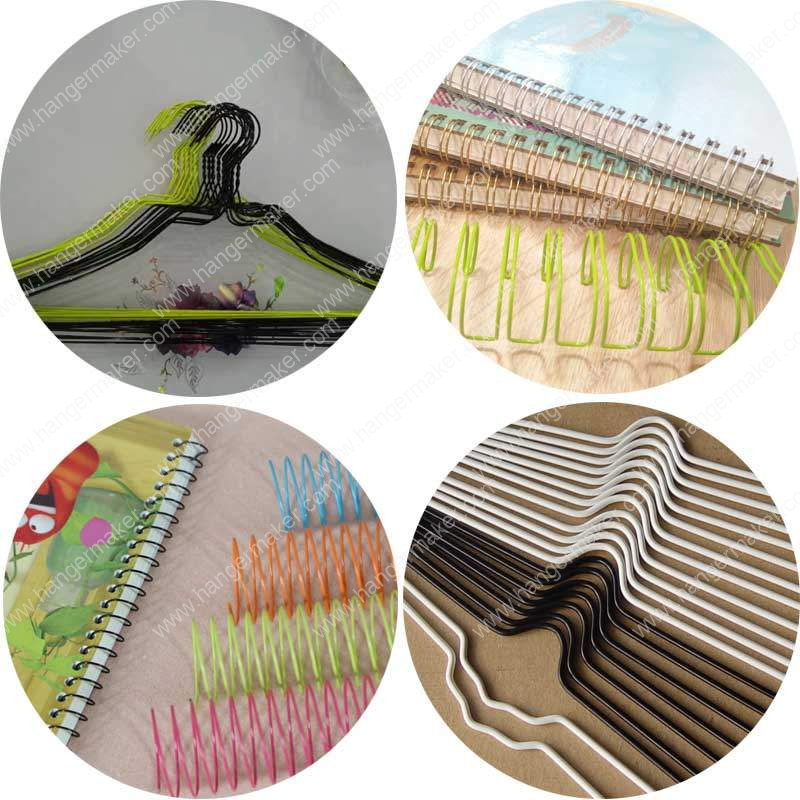Coatings and Platings for Protecting Steel Wire Introduction
One of the most commonly used forms of steel is wire. It is found in everything from springs, conveyor belts, and bicycles to shopping carts, lobster traps, and chain-link fences. But all those steel-wire products would have short lives if they weren’t protected against the elements. In fact, it’s the surface coatings and platings, which are both functional and decorative, that make steel wire so useful.
One of the main purposes of those coatings and platings is to prevent corrosion. They also provide abrasion resistance, electrical insulation, and impact resistance, and can either increase or reduce friction. Wire is also coated for appearance’s sake, to provide a desired finish or color, or to blend in with other parts.
Coating steel parts usually is done after a part is fabricated because forming, welding, and heat treatment can damage precoated surfaces. Wire coatings usually fall into one of two categories: metals applied by electroplating or dipping; and nonmetals such as nylons andpaints applied by dipping, spraying, or fluidized bed.
Table of Contents
Plating
In general, plating is the least expensive method of adding a corrosion-resistant metallic surface to steel wire. About 60% of all carbon-steel-wire plating is done with zinc: 20% with chromium, 10% with nickel, and the balance with aluminum, tin, copper, and brass.
The plating quality on wire is higher than on any other form of steel because drawn wire has fewer surface variations that can affect the plated finish. Plating thicknesses range from 0.0001 to 0.004 in., with most in the 0.0001 to 0.0015-in. range.
Zinc, whether it is applied by electroplating or hot dipping, is by far the most common metallic finish used for corrosion resistance on wire. That’s because of its low cost and continuing rust resistance. Even if it gets scratched, the zinc surface protects the underlying steel through sacrificial galvanic action.
For improved appearances, as well as additional hardness, abrasion resistance, and brightness, nickel is commonly used. It also comes at a reasonable cost. Electroplated chromium offers a lustrous finish and the highest level of corrosion resistance. It can be deposited as a thin decorative finish or, alternately, a thicker “hard chrome” that stands up to wear and frequent cleaning. Chromium can be plated directly on steel, but it often requires intermediate deposits of copper, nickel, or both.
The least costly finish is done at wire-forming plants and is available on what is known as prefinished steel wire. This can mean electroplated or hot-dipped zinc, hot-dipped aluminum, or a hit-dipped zinc/aluminum (a combination said to provide a longer service life that just plain zinc).
Coatings
Organic and inorganic coatings—primarily paint, lacquer, vinyl, nylon, and epoxy—are used for both appearance and functional needs. Coating range in thickness from 0.004 to 0.015 in., with moist in the 0.005 to 0.01-in. range. Coatings are also usually thinner for paints and thicker for plastics.
The lowest cost coatings are paints, which are used when decoration or color is the prime requisite. They are applied using an electrostatic or air spray, electrostatic powder, or cold dipping. Lacquer coatings are sometime used to increase the corrosion resistance of a zinc finish.
Polyvinyl chloride (PVC or vinyl) is the leading polymeric coating for steel wire, providing a rubber-like gripping surface, impact-resistance softness, chemical resistance, and dielectric strength. It is available in a variety of colors, as well as black and white, and is applied by cold dipping. The finish is not hard, however, so PVC coatings are not recommended for their abrasion resistance.
Nylon is harder than PVC and better resists rough wear and abrasion. Application is by dip, spray, or fluidized bed.
Epoxies provide harder, more durable coatings, but they are also the most expensive non-metallic wire coatings. Both nylon and epoxies are available in many colors.
PET Coating is Romiter Special Design Coating Tech. which have the feature of low cost and high quality coating result. It is an idea wire for loop wire, paper clip, bra hook, binding wire .
Company Profile
Romiter Group is a market leading designer and manufacturer of wire hanger making machine. Now, Romiter Group provides complete wire hanger making solution, which includes but is not limited to Wire Hanger Making Machine, Butterfly Shape Wire Hanger Making Machine, Wire Hanger Welding Machine, Wire Hanger Hook Welding Machine, CNC Control Plastic Coated Wire Hanger Making Machine, Wire Hanger PE Coating Machine, Wire Hanger PVC Coating Machine, Wooden Hanger Making Machine and Steel Wire PVC Coating Machine.
Romiter Machinery wins wide great reputation for products with high efficiency, excellent reliability, easy maintenance and long lifespan. Romiter has an excellent technical support team, including highly experienced machinists and service technicians.


